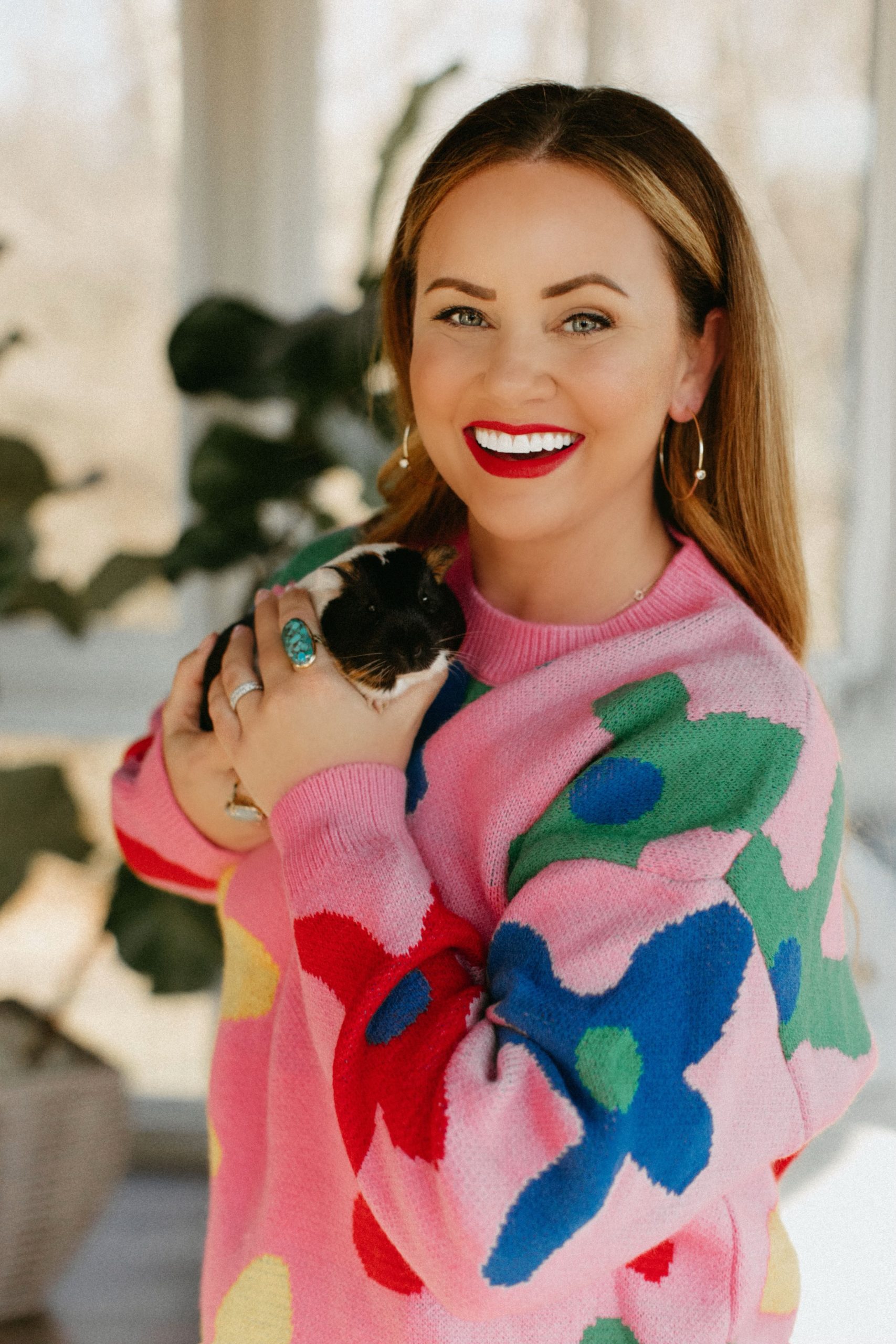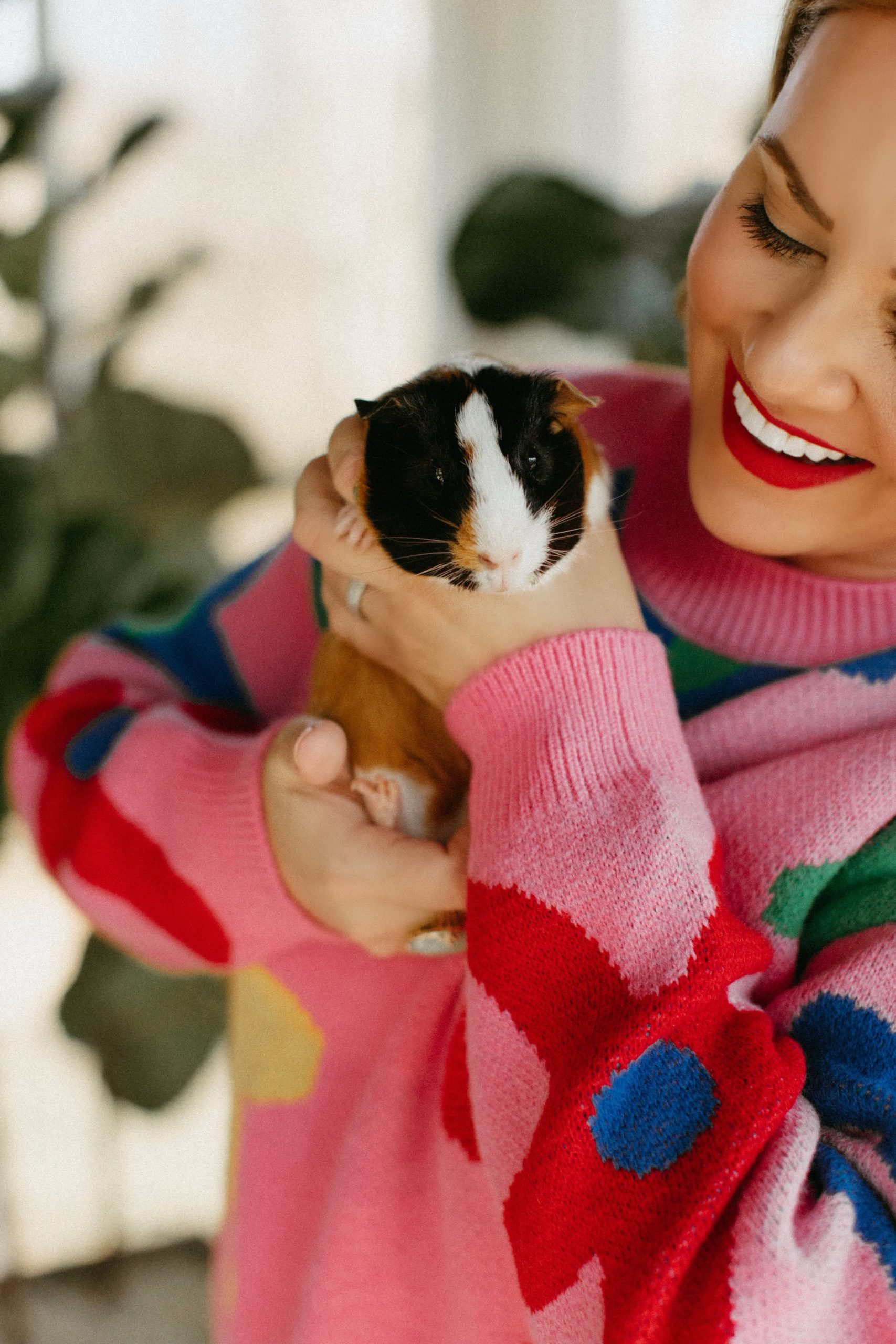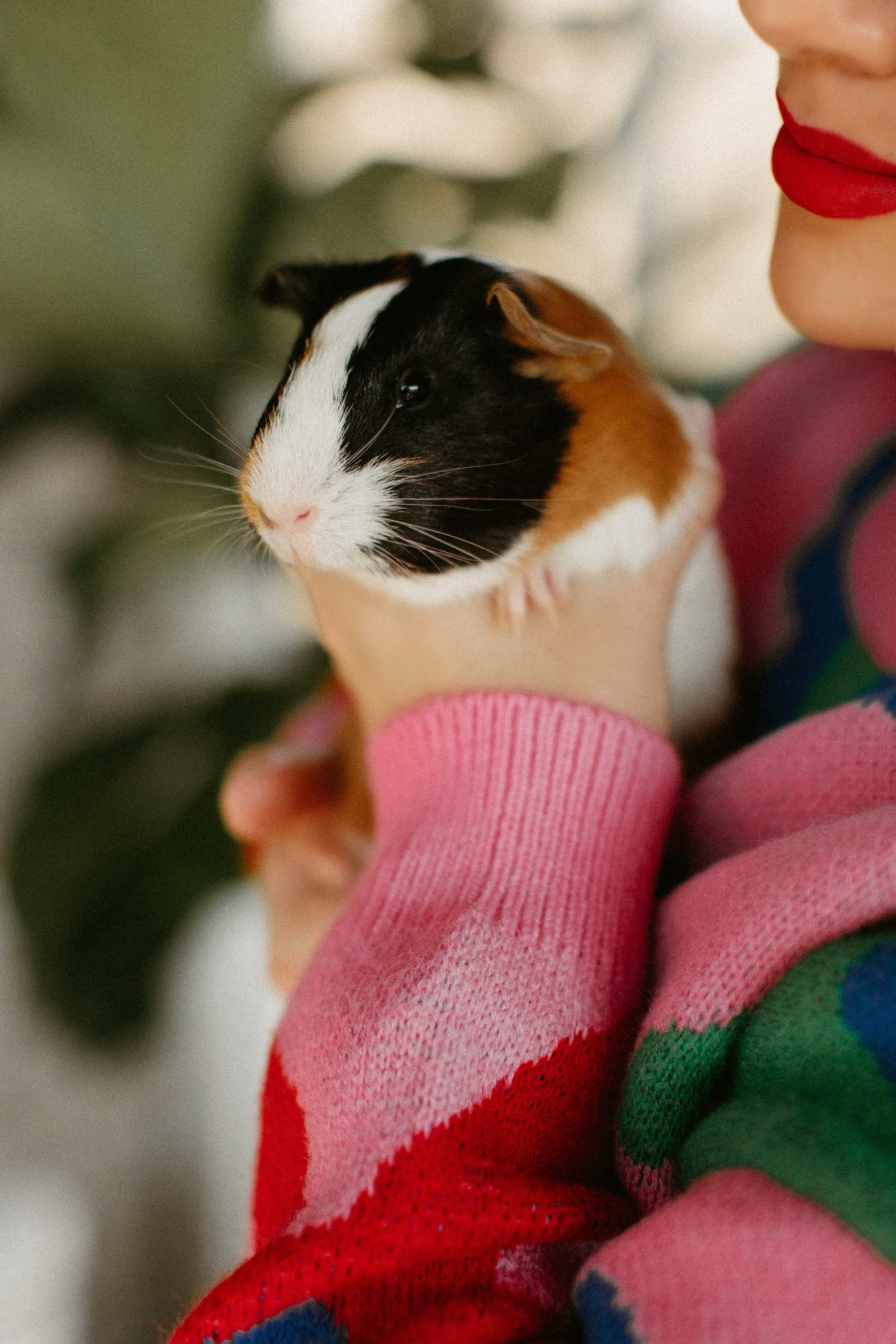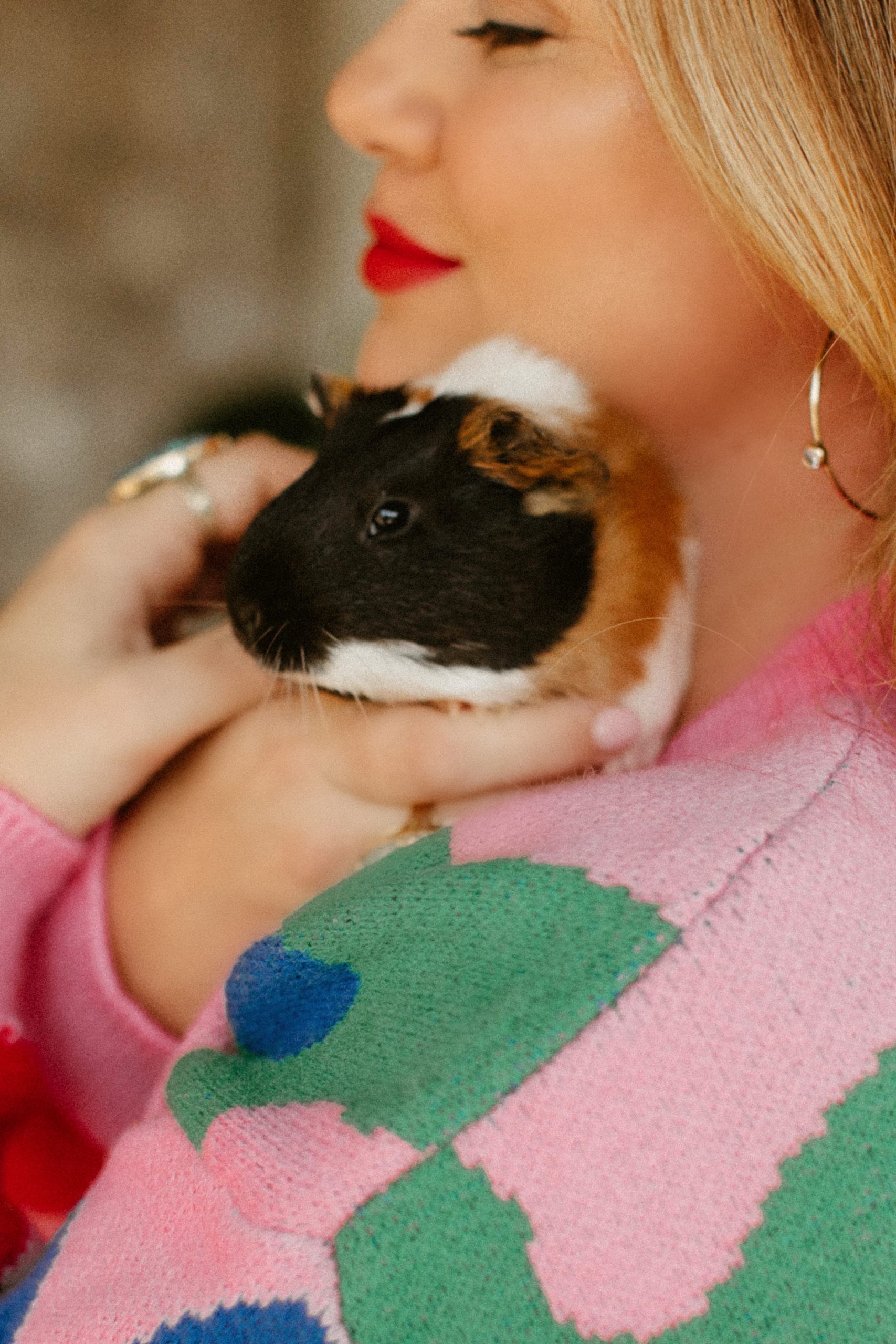Meet Mika and Lulu…the newest Webb family members! They were a Christmas morning surprise for Reins and Addison and they have been such an exciting and welcomed addition to our family. Cali and Carolina aren’t really sure what to make of them but we have all settled in nicely and have learned a lot in a short time! I’d say we are well on our way to having a little mini Webb farm…I kid I kid but maybe one day!
I wanted to not only introduce you to Mika and Lulu but I also wanted to share our guinea pig knowledge in the case that you may also be considering adding guinea pigs to your family. We have now had our piggies for a little over a month and they sure have taught us a lot…especially that a lot of love comes in small little furry packages!
I’m also going to share all of the essentials that you will need should you decide to get guinea pigs. I have done a lot of research and have found some valuable resources online as well…I’m taking what I have learned and outlining it here so hopefully you will have this post as a resource as well. I will also continue to update this post as we learn more.
GENERAL GUINEA PIG (GOOD TO KNOWS)
- Guinea pigs, also know as Cavies, are native to South America and they are rodents (the cutest little rodents we ever did see).
- It’s best to adopt guinea pigs as a pair and also best if you adopt a bonded pair. Make sure you either get two male piggies or two female piggies so you don’t end up with unwanted piggy babies. We have two girls from the same litter and they formed a special bond before we adopted them. We used www.guineapigfinder.com to find our girls (there are a lot of guinea pigs up for adoption so be sure to check this site or even your local humane society/shelters).
- In my opinion, Guinea pigs are not a great pet for small children. Our kiddos are 10 and 12 and this is the perfect age to share the responsibility of cleaning up after the piggies and also to understand how to hold them and tend to them in a fragile way. Small children would need constant supervision when holding and interacting with guinea pigs to ensure that the piggy or piggies do not get injured or harmed.
- Guinea pigs can’t see very well so its best talk to them in a calm gentle voice as often as you are around them. Help them get to know you by talking to them and gentle interactions.
- Guinea pigs are social animals and do like to interact with humans. Be patient with them as you build your bond…it does take time.
- They are skittish…especially at first. They will run and try to hide as much as possible because they are in a new surrounding, they don’t know you yet, and they are scared. Again, talking to them and interacting in a calm way will be key. We found that the best way to pick them up is to place a small fleece blanket over each one (this helps them feel safe, cozy and they feel like they are hiding) and pick them up with the blanket around them. We also recommend always sitting when holding them because they can become squirmy in your hands and if not prepared, they could potentially slip from your hands and fall.
- Guinea pigs have a very fragile spinal cord so be very careful when picking up and holding them.
- They have a wide range of noises that they make…they are all so cute! We don’t mind their noises at all and we haven’t found them to be too loud. The only time that they do sound a bit loud is when they start “wheeking”. Ours don’t do this often but it is a form of communication for them. I recommend viewing videos on YouTube that share the different noises that piggies make so you can get familiar with them.
- Guinea pigs poop A LOT…I mean A LOT! The poop is like a tic tac so it is small in size and typically they are soft but not mushy. Be prepared for cleaning up LOTS of poop. Easy to do with a small handheld broom and it is recommended that you sweep out their enclosure at least twice a day to avoid them stepping in their own poop and moving it around.
- They like to hide so it is important to have plenty of comfy cozy spaces within their enclosure to hide. There are all kinds of fun guinea pig hideouts…just search Amazon.
- Guinea pigs like routine…try to keep them on a consistent daily routine and feed them at the same time every day.
- They can overheat so it is best not to leave them in direct sunlight for very long and to ensure that you alway monitor their safety should you give them any outside time. They are nervous with all of the additional “outside” noises so be considerate of their stress levels as well.
- You should trim their little nails at least once a month. If you don’t trim their nails, they can curl under and cause foot problems.
- Guinea pigs don’t typically need to see a Veterinarian unless something is wrong but it is great to take them in for a yearly check up to make sure all is well. Check in your local area to find a Veterinarian who has experience with guinea pigs.
WHAT DO GUINEA PIGS EAT?
- Timothy hay (it is important to have Timothy hay available to your piggies at all times within their enclosure). It’s an essential part of their diet and it helps with digestion and keeping their teeth trimmed.
- Guinea Pig Pellets
- Fresh vegetables and fruits (we feed our romaine lettuce, spinach, kale, broccoli, cauliflower, bell peppers, carrots, asparagus, cilantro, curly parsley, orange slices, apple slices, strawberries, and an occasional piece of banana or two. Their favorite is romaine lettuce! Fruit should only be given 2-3 times per week and in moderation. There are lists available of what you can and cannot feed guinea pigs so be sure to check those out.
- Guinea Pig Treats (we like these biscuits, these pea flakes, and these dried strawberries)
- They also must have fresh water in their enclosure on a daily basis (we like this water bottle).
WHAT SUPPLIES DO GUINEA PIGS NEED (PLUS ALL FOOD LISTED ABOVE)?
- Midwest crate or C&C crate (you need a sizable enclosure so your piggy or piggies can easily move around)
- Crate fleece liners (these are soft on their feed, absorbable, and easy to wash and change out…we recommend at least 2 of these if not 3 so you can easily change out their crate twice a week and have a clean one waiting)
- Fleece blankets (great for adding into the crate and also for holding them)
- Caves or little cozy hideouts and tunnels
- Bowl for pellets
- Timothy hay feeders
- Litter box (great if you want to teach them to potty in the same corner and easy to clean)
- Litter box cozy odor control pet bedding
- Dustpan and broom
- Nail trimmers
- Small animal portable play pen and play pen fleece liner
- Guinea pig toys (this is great to keep them busy and engaged with exploring…also great for chewing and keeping their teeth trimmed)
- Small animal soft pet carrier
I hope you find this information helpful and please don’t hesitate to reach out should you have any questions! Happy to share what knowledge I do have and I plan on learning more as we continue to get to know our sweet Mika and Lulu!
As always, thanks so much for stopping by…see you back here real soon!








Can you link the cage you use for your Guinea pigs?